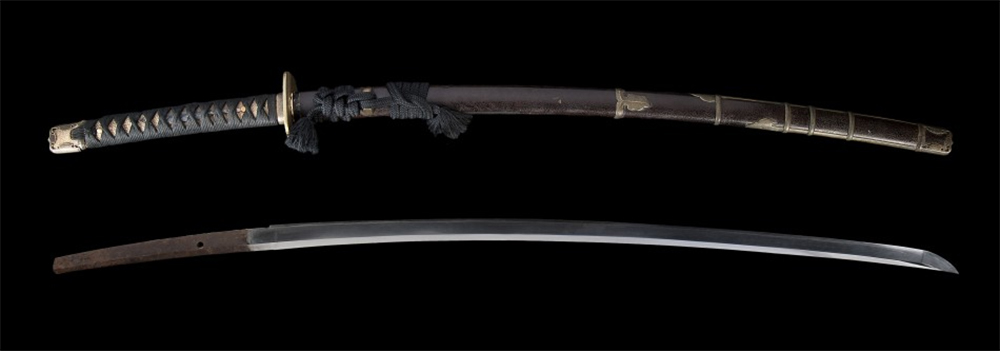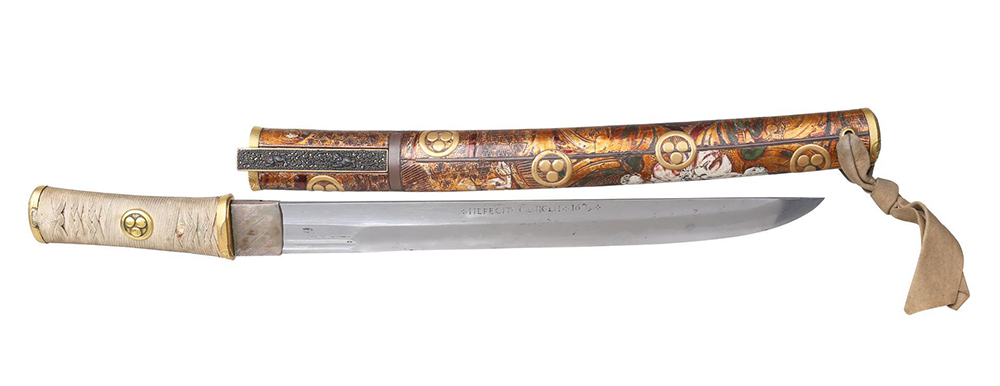Different types of japanese koshirae

In addition to being prized for their superior quality, traditional Japanese swords were often revered for their ornate decorations, including those on the koshirae. Koshirae is somewhat of a catch-all term that covers all ornate mountings in which a sword is carried and stored. Not to be confused with shirasaya -- an undecorated wooden mount -- koshirae emphasized aesthetics to create a vibrant appearance.
Tachi-Style

As the name suggests, the tachi-style koshirae was typically used as a mounting for the Japanese tachi. The sword would hang down from two hangers (known as ashi), and it features a hilt with greater curvature than the actual blade itself. Normally, this hilt was secured with two pegs (known as mekugi), whereas other koshirae featured only one peg with the hilt.
Katana-Style

Perhaps the most popular traditional koshirae was the katana-style. The sword is worn with the cutting edge facing up, with the blade protected in an enclosure of similar size.
Han-Dachi

The han-dachi is an alternative style of koshirae that borrows elements from multiple styles. For instance, the sword is worn with the cutting edge facing up -- like the katana-style -- but it has kabuto-gane fittings instead of a kashira.
Aikuchi

The aikuchi, which translates into "meeting mouth" is a koshirae style that's characterized by the tsuka and saya meeting directly. Normally, there's a tsuba separating these two elements. With the aikuchi style, however, the tsuka and tsuba touch without any barrier between. The aikuchi style koshirae was first used on the koshigatana, as it allowed samurai warriors to keep their sword close to their body while wearing armor. Later, however, it became a popular choice among upper-class mounting due to its ease of use and versatility with the tanto.
Shinkomizue
The shinkomizue is a koshirae style that's widely recognized for its cane-like appearance. The sword is placed in a cane, where it's both concealed and protected. The fictional swordmaster Zatoichi is said to have used the shinkomizue.
Different Parts of the Koshirae
Of course, there are different parts of the koshirae, some of which include the following:
- Saya: this is the scabbard, which is typically made of either wood or bamboo and coated with lacquer on the outside.
- Sageo: cord made of silk, cotton or leather that's wrapped around the koshirae.
- Kuri-kata: knob that is secured to the scabbard.
- Kojiri: end cap that's attached to the scabbard.
- Kogatana: small blade that fits into the pocket of a scabbard.
Discover the many attractive options available for Katana swords and custom swords.
Want a unique sword? Feel free to contact us:
Phone: 086 13739276006
Email: [email protected]
Website: www.hanbonforge.com
Custom Sword Page: www.hanbonforge.com/CUSTOM-SWORDS/Custom-Your-Own-Swords

2 Comment(s)
zoek lights katana blade possibile between 780 a 82o gram MVG ievin
This is amazing. Thanks for sharing this blog. I have become a fan of your blogs. This blog is so interesting and informative.
Leave a Comment